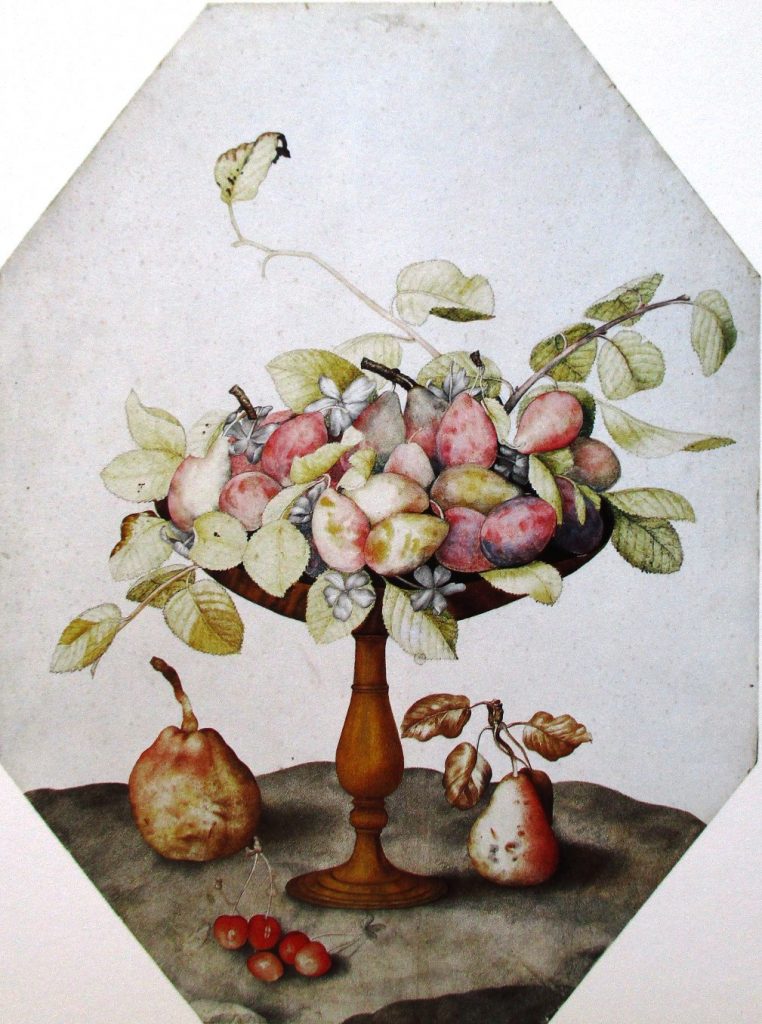Giovanna Garzoni (1600-1670) was born in a family of craftsmen. Against all social conventions she was given a full artistic education and training. Her first recorded work a Holy Family is dated on 1616. She married the Venetian portraitist Tiberio Tinelli when she was 22 years old but they split up one year later.
There would be no other love adventure in her life, no source of scandal. She was free so she decided to focus on her artistic vocation and this during her entire life. At that time, oil painting wasn’t an option for any woman so she was devoted to scientific illustration (animals and plants), calligraphy and miniatures, ‘all those things a honest woman can do at home’ according to this period customs and standards.

She looked for commissions and tried to gain the protection of diverse patrons such as the Medici or the Dukes of Savoy. She travelled tirelessly: Rome, Paris, Naples, Turin, Florence and stayed in Paris for a short period. In a society where the female condition was scarcely taken into consideration, she was capable of gaining credit and approval of much powerful people and earning recognition among her mates.
Almost in every work done, Garzoni used much diluted watercolour on vellum and, for that end, she employed paints whose characteristics and properties were similar to nowadays watercolours.
She made delicate still-life with flowers and fruits and quite often with insects like butterflies, grasshoppers, beetles and bumblebees. All these animals were represented paying great attention to any tiny detail. The Accademia di San Luca di Roma still preserves some wonderful studies on butterflies, so accurate it is easy to recognise any species; we need to mention a ‘Painted Lady’ (Vanessa cardui) or a ‘Peacock’ (Inachis io). It is absolutely impossible to achieve these works if it is not working with real models.

I can imagine Giovanna in magnificent palaces in order to request an audience, hoping for a commission or a pension, always discreet and industrious. Certainly, being a woman made things much more difficult but also allowed her to work with no regard to men’s ambitions nor artistic jealousy.
